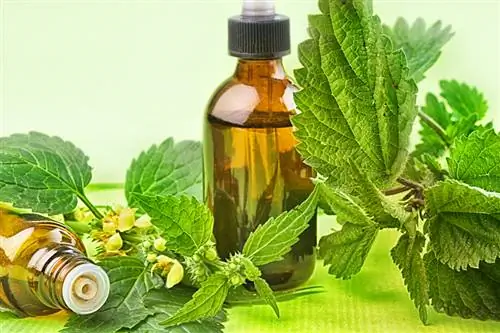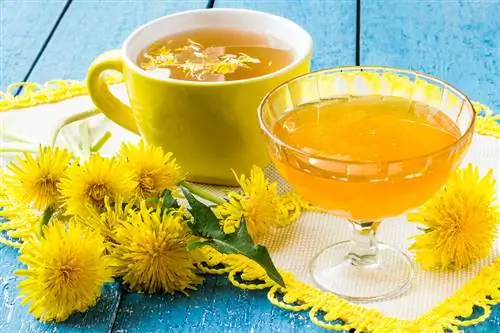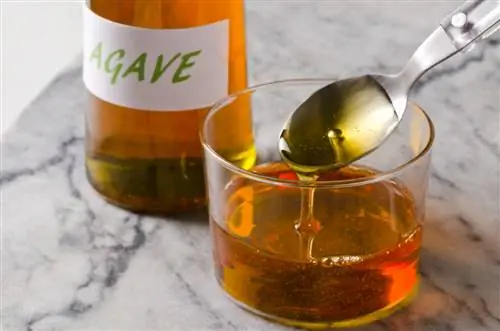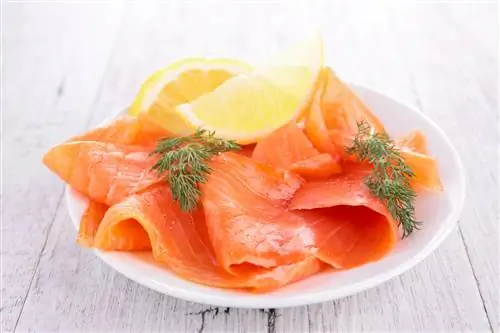- Author admin [email protected].
- Public 2023-12-16 16:46.
- Last modified 2025-01-23 11:20.
The nasturtium is not only extremely tasty, but also very he althy. It is rich in vitamin C and contains mustard oil glycosides. This makes it antiviral, antibiotic and antifungal and is often used as a remedy against various infectious diseases.
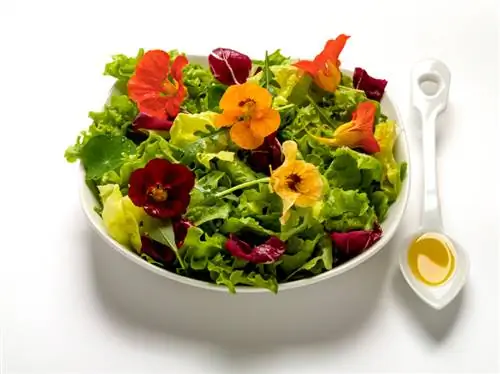
Which parts of the nasturtium are edible?
The edible parts of nasturtium are the young leaves, flowers, buds and immature seeds. They taste spicy and hot and are suitable for salads, bread toppings, as a substitute for capers or for making flower vinegar.
Which parts of the nasturtium are edible?
In the Andes, the original home of the nasturtium, the bulbous nasturtium (Mashua) is grown as a useful plant. Its tuber is used in a similar way to the potato and is also eaten mashed or roasted. When dried, the tuber lasts for several years.
In our latitudes, only the above-ground parts of the plant are consumed. The young leaves are ideal as a spicy bread topping or for salads, as are the flowers. The taste of nasturtium is spicy and hot, similar to watercress, to which it is not related.
Nasturtium is also often used as a caper substitute. Briefly boil closed buds or unripe seeds in a broth made from vinegar, water and s alt. Then fill the still hot mixture into a clean screw-top jar and pour it immediately. Stored in a cool and dark place, your fake capers will last for a few months.
Production of flower vinegar
You can make an excellent flower vinegar with the flowers of the nasturtium. To do this, put the unsprayed, clean flowers in a wide-mouthed bottle and fill it with a mild vinegar. Apple cider vinegar or mild wine vinegar is recommended. The liquid must completely cover the flowers, otherwise there is a risk of mold.
Well closed, place your vinegar bottle in a dark place. You should shake this bottle well once a day. The vinegar slowly takes on the taste and color of the flowers. After about four weeks you can strain and use the vinegar.
Nasturtium as a remedy
To use nasturtium as a medicine, it does not need to be specially processed. It is enough if you season your dishes with nasturtium or eat the leaves and flowers in a salad. However, the crushed leaves can also be used to make a tea, which makes it easier to use regularly. For half a liter of water you need about two teaspoons.
If you want to strengthen your immune system and prevent colds, then include nasturtium in your daily diet. About 40 grams of fresh nasturtium leaves and/or flowers contain enough active ingredients to strengthen the immune system.
Nasturtium is often used for diseases of the upper respiratory tract, such as inflammation of the paranasal sinuses or bronchitis, but also for bladder infections and other urinary tract infections. When used externally, nasturtium leaves are also said to promote wound healing and relieve muscle pain.
Tips & Tricks
Due to its high content of mustard oil glycosides and vitamin C, nasturtium is ideal for strengthening the immune system and preventing colds.



